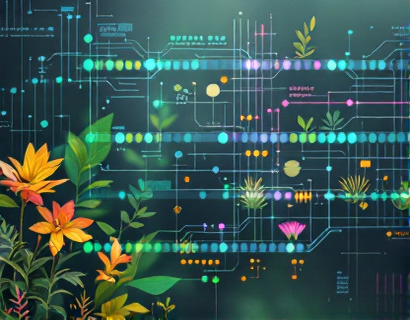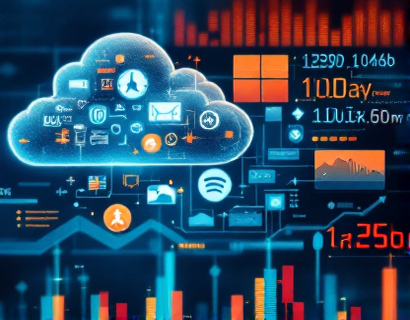Unlocking Device Potential: The Future of Open-Source Technology for Enhanced Performance and User-Centric Design
The landscape of technology is rapidly evolving, driven by the relentless pursuit of innovation and the democratization of computing resources. At the heart of this transformation is the open-source movement, which has been instrumental in pushing the boundaries of what devices can achieve. This article delves into the realm of open-source operating systems that are redefining device performance and user experience, offering unparalleled flexibility, extensive customization, and seamless cross-device integration.
The concept of an open operating system is not new, but recent advancements have brought it to the forefront of technological discourse. These systems are built on the principles of openness, collaboration, and community-driven development. Unlike proprietary systems, open-source operating systems allow users to access, modify, and distribute the source code, fostering a culture of innovation and continuous improvement.
One of the key advantages of open-source operating systems is their ability to maximize device performance. By leveraging a community of developers, these systems can incorporate cutting-edge optimizations and features that might take years to appear in closed systems. The transparency of the source code enables developers to identify and fix bottlenecks, enhance security, and improve overall efficiency. This results in devices that run smoother, faster, and more reliably.
User experience is another critical aspect where open-source operating systems excel. The focus on user-centric design ensures that the technology is not only powerful but also intuitive and accessible. Customization options allow users to tailor their devices to their specific needs and preferences, creating a personalized computing environment. Whether it's adjusting the interface, installing specialized software, or integrating with other devices, the flexibility offered by open-source systems is unmatched.
Seamless cross-device integration is a game-changer in the modern tech ecosystem. Open-source operating systems facilitate smooth interactions between various devices, from smartphones and tablets to laptops and desktops. This interoperability is achieved through standardized protocols and APIs, ensuring that users can enjoy a consistent experience across all their devices. No longer are users tied to a specific ecosystem; instead, they can freely switch between platforms without compromising functionality or performance.
The benefits of open-source technology extend beyond individual devices to the broader tech community. By promoting collaboration and knowledge sharing, these systems accelerate the pace of innovation. Developers from around the world contribute to open-source projects, bringing diverse perspectives and expertise. This collective effort leads to more robust, secure, and feature-rich software that benefits everyone.
Let's explore some of the leading open-source operating systems that are making waves in the tech world. One such system is Linux, the granddaddy of open-source operating systems. Linux has been the backbone of server environments for decades, but its desktop variants have also gained significant traction. Distributions like Ubuntu, Fedora, and Manjaro offer a blend of stability, security, and customization options. These distributions are regularly updated by a vibrant community of developers, ensuring that users always have access to the latest features and security patches.
Another notable example is Chrome OS, which, while not entirely open in the traditional sense, leverages open-source components to deliver a fast, secure, and user-friendly experience. Based on the Linux kernel and Google's Chromium browser, Chrome OS is designed for web-centric computing. Its lightweight nature and automatic updates make it an excellent choice for devices that prioritize speed and simplicity. The open nature of its underlying technology allows for extensive customization and integration with other open-source tools.
Then there's FreeBSD, a robust and reliable open-source operating system that has been around since the early days of the internet. Known for its stability and performance, FreeBSD is often used in high-demand environments such as servers, routers, and embedded systems. Its portability across different hardware platforms and strong security features make it a preferred choice for many organizations. The system's modular design allows for extensive customization, catering to both enterprise and individual users.
OpenSolaris, although no longer actively developed, laid the groundwork for many modern open-source operating systems. Its contributions to the Open Compute Project and the ZFS file system have had a lasting impact on the tech industry. The principles and technologies developed under OpenSolaris continue to influence contemporary open-source projects, ensuring that its legacy lives on.
The advantages of open-source operating systems are not limited to performance and customization. Security is a critical concern in today's digital landscape, and open-source systems often have an edge in this area. With source code available for scrutiny, vulnerabilities can be identified and patched more quickly. The transparency of the development process also means that security updates are typically released in a timely manner, reducing the window of exposure for potential threats.
Moreover, open-source operating systems promote digital sovereignty and privacy. Users have greater control over their data and can choose which applications and services to use. This level of control is particularly important in an era where data privacy is a growing concern. By avoiding proprietary systems that may collect and monetize user data, individuals can maintain their privacy and autonomy.
The community-driven nature of open-source projects also fosters a sense of inclusivity and accessibility. Developers from diverse backgrounds contribute to these projects, ensuring that the software meets the needs of a wide range of users. This inclusivity extends to the documentation and support resources, which are often comprehensive and accessible to users of all skill levels. Whether you're a seasoned developer or a casual user, there are ample resources to help you get the most out of open-source operating systems.
In addition to the technical benefits, open-source operating systems play a crucial role in education and research. Students and researchers can study and modify the code to learn about system architecture, networking, and security. This hands-on approach to learning is invaluable, providing practical experience that complements theoretical knowledge. Open-source projects also serve as a platform for collaborative research, enabling scholars to work together on cutting-edge projects.
The future of open-source technology is bright, with ongoing developments promising even greater advancements. One area of focus is the integration of artificial intelligence and machine learning into open-source operating systems. These technologies can enhance user experience by providing intelligent recommendations, automating routine tasks, and improving system performance. Open-source communities are already exploring these possibilities, laying the groundwork for a new generation of smart, adaptive devices.
Another exciting development is the rise of containerization and microservices architectures, which are deeply rooted in open-source principles. Technologies like Docker and Kubernetes have revolutionized the way applications are developed, deployed, and managed. These tools enable developers to create highly scalable and resilient systems, further enhancing the capabilities of open-source operating systems.
As the tech industry continues to evolve, the importance of open-source operating systems will only grow. They offer a sustainable and democratic alternative to proprietary systems, empowering users and developers alike. By embracing open-source technology, individuals and organizations can unlock the full potential of their devices, driving innovation and creating a more connected, secure, and user-friendly digital world.










































